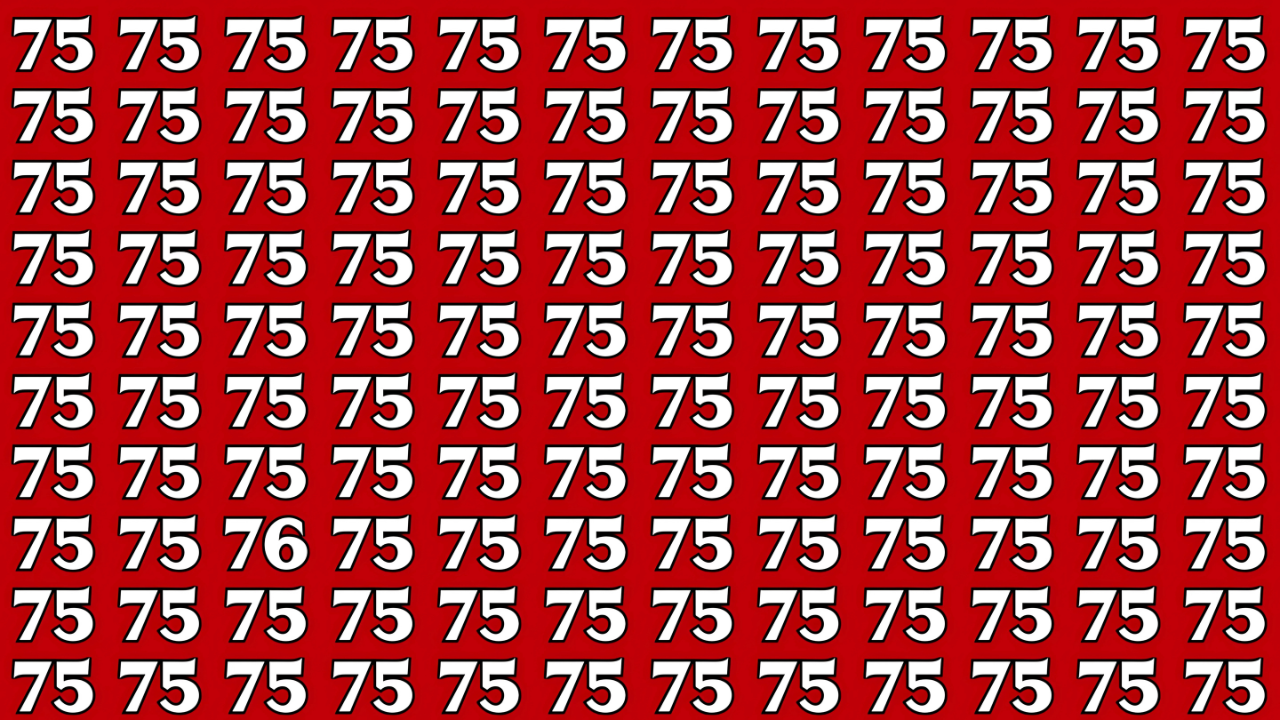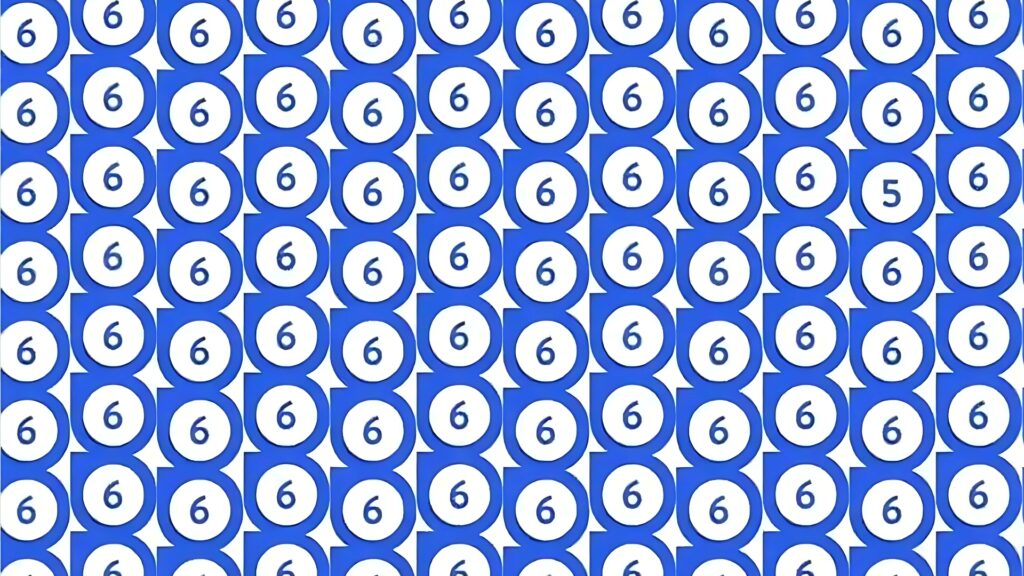Optical illusions have captivated human curiosity for centuries. They exploit the gap between what our eyes see and how our brain processes that information. These visual puzzles aren’t just entertaining diversions; they actually reveal fascinating insights about our cognitive functions.
Also Read: –Optical Illusion Every Aussie Must Try Check Your IQ Eyes Test By Spotting The Hidden Deer In The Image
Many people enjoy these challenges because they provide a quick mental workout. The satisfaction of finding that hidden element triggers a small dopamine rush that keeps us coming back for more puzzles and brain teasers.
Table of Contents
Today’s 6-Second Challenge: Find the Imposter

This particular challenge seems deceptively simple on the surface. You’re presented with a grid filled with the number 75 repeated dozens of times across the image. Hidden somewhere within this sea of identical numbers lies a single instance of the number 76.

Your mission, should you choose to accept it, is to locate this numerical oddity in just 6 seconds or less. The clock starts ticking the moment your eyes land on the image. Ready?
Why This Challenge Tests More Than Just Vision
What makes this particular illusion interesting isn’t just about having sharp eyesight. It tests several cognitive skills simultaneously. Your brain must process each number quickly while scanning in a methodical pattern.
The challenge requires intense concentration combined with the ability to spot subtle differences. The numbers 75 and 76 share visual similarities, which makes this task particularly tricky for our pattern-recognition systems.
The Science Behind Pattern Recognition
Our brains are naturally wired to recognize patterns in our environment. This evolutionary trait helped our ancestors identify threats and find food. Today, this same ability helps us navigate complex visual environments and solve puzzles like this one.
When confronted with a grid of identical objects, our brain initially perceives the whole as a single pattern. Finding the exception requires overriding this automatic grouping mechanism and examining each element individually.
Processing Speed Matters
The 6-second time limit isn’t arbitrary. It’s carefully chosen to test the processing speed of your visual system. Those who can quickly shift between seeing the forest and the trees tend to excel at these challenges.
Research suggests that individuals with higher visual processing speeds often demonstrate advantages in other cognitive areas as well. This includes better memory retention and more efficient problem-solving capabilities.
Did You Find It? What Your Performance Reveals
If you successfully located the number 76 within the time limit, congratulations! Your visual acuity and pattern recognition abilities are likely well above average. You’ve demonstrated excellent attention to detail under time pressure.
Don’t be discouraged if you couldn’t find it immediately. These challenges are designed to be difficult, and practice can significantly improve your performance over time. The brain is remarkably adaptable and can be trained to become more efficient at these visual tasks.
The Solution Revealed
For those still searching, the elusive number 76 is positioned in the lower left quadrant of the image. It blends so seamlessly with its neighbors that many viewers’ eyes simply glide right past it without registering the difference.
The subtle distinction between 5 and 6 requires your brain to make a micro-comparison for each number in the grid. This process happens so quickly that you’re rarely conscious of the individual steps involved.
Optical illusion Answer

Benefits of Regular Brain Teasers
Incorporating puzzles like this one into your daily routine offers genuine cognitive benefits. These challenges help maintain neural pathways and can potentially slow age-related decline in visual processing.
Regularly engaging with optical illusions and similar brain teasers keeps your mind agile. Each puzzle strengthens connections between different brain regions, promoting overall mental fitness in much the same way physical exercise builds bodily strength.
Create Your Own Challenge
Why not take this concept and create your own version to challenge friends and family? Design a grid with repeating numbers or shapes with just one subtle variation. See who can spot the difference in the shortest time.
These homemade puzzles promote healthy competition while exercising everyone’s cognitive abilities. Plus, they make for excellent conversation starters at gatherings or enjoyable activities during long travels.
FAQs About Optical Illusions
Why do some people solve optical illusions faster than others?
Individual differences in visual processing speed, attention to detail, and pattern recognition abilities all contribute to performance variations.
Can practicing optical illusions improve brain function?
Yes, regular engagement with visual puzzles has been shown to enhance cognitive flexibility and processing speed.
Are optical illusions just tricks, or do they have scientific value?
Beyond entertainment, optical illusions provide valuable insights into how our visual system and brain process information.
Why is there a time limit on this challenge?
The 6-second limit tests your brain’s ability to process visual information quickly and efficiently.
Can children benefit from solving optical illusions?
Absolutely! These challenges help develop critical thinking skills and visual discrimination abilities in developing minds.
If I couldn’t find the number 76, does it mean my vision is poor?
Not necessarily. This challenge tests cognitive processing more than visual acuity.
How often should I practice these types of puzzles?
Even just a few minutes daily can provide cognitive benefits and keep your mind sharp.
Do optical illusions work the same way for everyone?
No, cultural background, age, and individual neurological differences can all affect how people perceive optical illusions.
This article explores the fascinating world of optical illusions and pattern recognition through a simple yet challenging visual puzzle. By testing your ability to spot a single number 76 among countless 75s in just 6 seconds, you gain insight into your brain’s remarkable processing capabilities and perhaps discover opportunities to strengthen these skills through regular practice.






